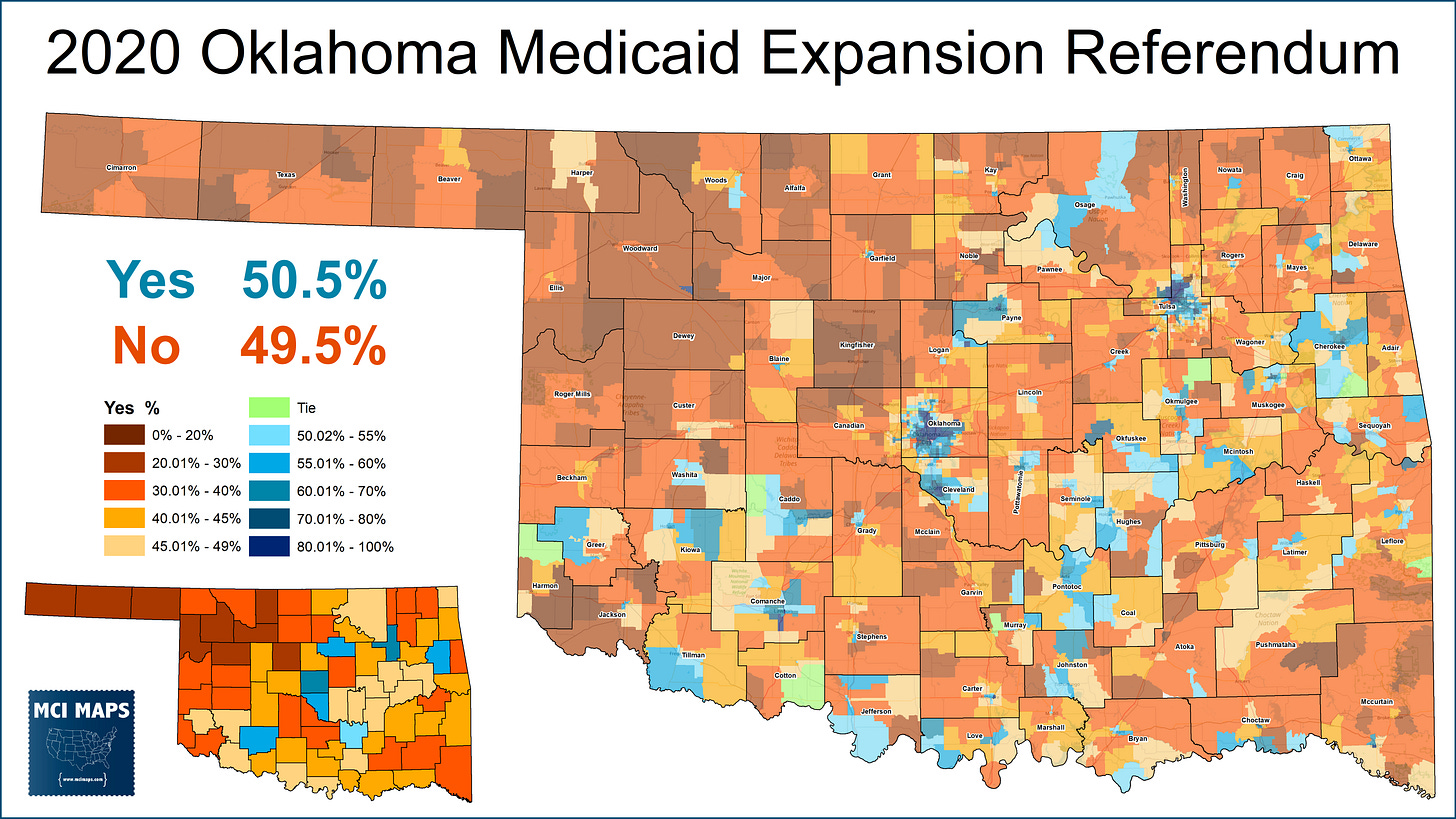Issue #53: South Dakota GOP fails in effort to change Ballot Measures
Referendum would have required 60% to pass ballot measures
The June 7th elections were filled with primary races from 7 states. However, the top race I was watching last night was in South Dakota. There, a measure was being put forward to voters: Amendment C. This proposal would raise the threshold for passing certain initiatives. If passed, any future ballot measure would require 60% if it would cost at least $10 million dollars over the next five years; or lead to raising of taxes or fees.
Increased thresholds for ballot measures is not a new concept, and exists in a handful of states. So why is this so controversial? Because it is a clear effort by the South Dakota legislature to hurt a November ballot measure that would expand Medicaid. That proposal, Amendment D, would require 60% if last night’s measure passed. We’ve seen Medicaid pass at the ballot before in conservative states, but often with under 60%
The timing of the referendum, to be held during the primaries and thus applying to the November proposals, screamed of partisan intent. It would not be the first time this topic, or legislative interference, came up in South Dakota.
2018 Ballot Measures
The 2018 election cycle saw two prominent measures arise to alter referendums in the state. These measures came as Republican Congresswoman Kristi Noem was in a closer-than-expected race against Democratic State Senator Billie Sutton. Noem would go on to win by 3%.
The first ballot measure was a constitutional amendment to change the threshold for approving an initiative to 55%. This plan failed across most of the state; though most counties were fairly divided on the topic. This was a measure pushed by Republicans, with Democrats opposed. Newspaper editorials criticized the proposal.
There is a debate among government groups and political scientists around this topic. Many will argue these efforts are power grabs by whatever party is in power. Arguments for such proposals highlight the concern about divisive measures becoming law with bare-majorities of the vote; sometimes from one-sided money fights. When Florida passed a 60% threshold in 2006, it came after years of crowded ballots; with measures relating to animal welfare (see the infamous “Pregnant Pigs” amendment) and back-and-forth amendments over high-speed rail. Florida’s bloated ballots became a running joke.
When I got to FSU in 2005, the debate around the initiative process and maybe raising the threshold was already underway - discussed by both sides of the spectrum. In fact, many liberals supported the 2006 measure as a way to try and guard against right-wing measures the legislature might put up. The measure passed with 58%, ironically under 60.
The threshold change debate varies from state. Skepticism about WHY its being proposed is a valid point. Recent years have seen a greater push to weaken ballot measures; making what may have started as a legit reform question into a partisan affair. Motive does matter.
Another measure in the 2018 South Dakota ballot set the rule that all ballot measures should be single-subject. This is also a rule found in Florida, and in many states.
On principle, this makes sense. However, the single-subject rule would be abused 3 years later.
In 2020, voters approved recreational marijuana in the state.
However, the legislature sued over the measure. They claimed the measure violated the single-subject rule because it legalized marijuana and set regulations around it. The conservative courts sided with the legislature, killing the amendment (details here). This is an incredibly restrictive interpretation of single-subject rules. A more common argument would be “a ballot measure cannot legalize weed and expand Medicaid.” That would be two subjects. A measure that legalizes something and sets its regulations may be all-encompassing, but the “subject” is marijuana.
Luckily for some voters, the state passed medical marijuana that same day.
A revised amendment to legalize marijuana will be on the 2022 ballot as well.
June 2022 Referendum Results
Note: All results discussed below were as of 95% reporting, so vote totals will trickle up a bit.
It really felt like the Republican plan to pass this latest constitutional amendment could succeed. The June primaries only feature statewide GOP races; with all Democrats unopposed. However, despite this advantage, the measure to raise the threshold to 60% failed by a resounding 33%-67%.
In the US Senate GOP primary 120,000 votes were cast. Meanwhile, 182,000 votes were cast in the referendum. Non-Republicans showed up for the referendum, killing the GOP hope that the referendum would be decided by just conservative partisans.
Currently, the YES (aka GOP position) side of the referendum has 60,000 votes. That is just half of total GOP primary voters. Its clear many GOP voters rejected the proposal as well.
On an unrelated note, Congressman Dusty Johnson, who angered right-wing activists by voting for the January 6th investigative committee, held on in his primary by a modest 59%-41%
Not a strong showing for an incumbent.
Heading into November, the Medicaid measure will no doubt be a major contest. The South Dakota GOP is clearly against the proposal. However, large chunks of GOP voters have defied their party on the measures before. However, its safe to say that if it does pass, the South Dakota GOP will use any tricks they can to stop its implementation.
Future shenanigans aside, for Medicaid expansions proponents, last night was a victory.













